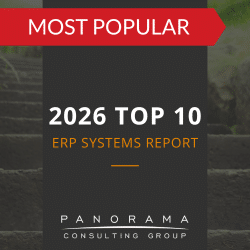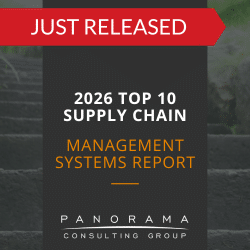It is always surprising to see organizations spend millions of dollars on ERP systems without any true, clear or measurable indications of what their expected benefits will be. Typically, companies think that new or upgraded enterprise software will help increase productivity, drive down labor costs and/or improve their competitive edge, but many make the mistake of not actually a. agreeing upon and “cementing” those expectations, b. putting the resources to play to measure and track their progress against them and c. investing the time and money to adjust operations if the expectations aren’t being met.
Everyone knows about key performance indicators (KPIs): the metrics used to discover how exactly an ERP system is performing. Most software comes with pre-defined KPIs, which can be very useful to get the ball rolling, but companies also need to harness the oversight and decision-making capabilities of its executive level to define indicators specific to the individual organization’s wants and needs. This is not a task that should be delegated to the IT department. Rather, it’s at the core of operations, and the indicators chosen must truly reflect both the company’s vision for its future as well as the strategy it will employ to achieve that vision. Progress against those goals is, arguably, the only ERP benefits realization that matters — and the only data that will tell the organization how its ERP implementation went, how its staff is responding to the system, and what its return is and will be on the solution.
When defining indicators, it’s important to take a long and hard look at the processes mapped in the business blueprinting stage of ERP implementation planning. The documentation of both the “as is” and “to be” processes give organizations much needed insight into inefficiency in processes, operations and staffing levels — all of which can and must be addressed to gain benefits from the ERP system. Beyond looking at the processes and coming to high-level determinations (e.g., “We need to reduce inventory by 15-percent,”), however, the executive level also must take pains to define how the processes will be adjusted on the operational level. Without making the changes (and managing them correctly) at the “hands-on” operational stage, an organization will be hard-pressed to make any real progress towards increased efficiency and profitability. The accountability for this progress also must be shared across organizational levels.
Learn more about Panorama’s unique and proprietary business blueprinting and benefits realization services on our site, or contact us directly to talk specifically about how we can help your organization receive the best possible return from its implementation.












